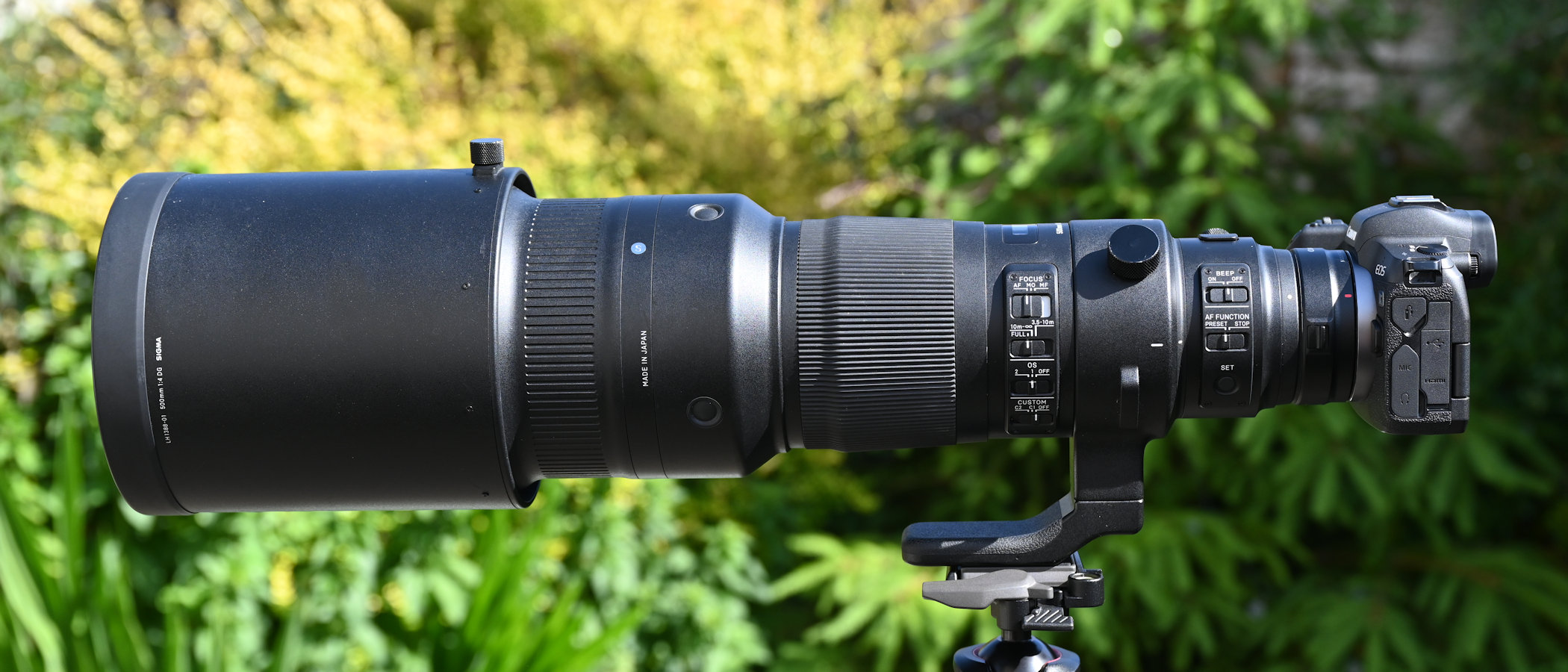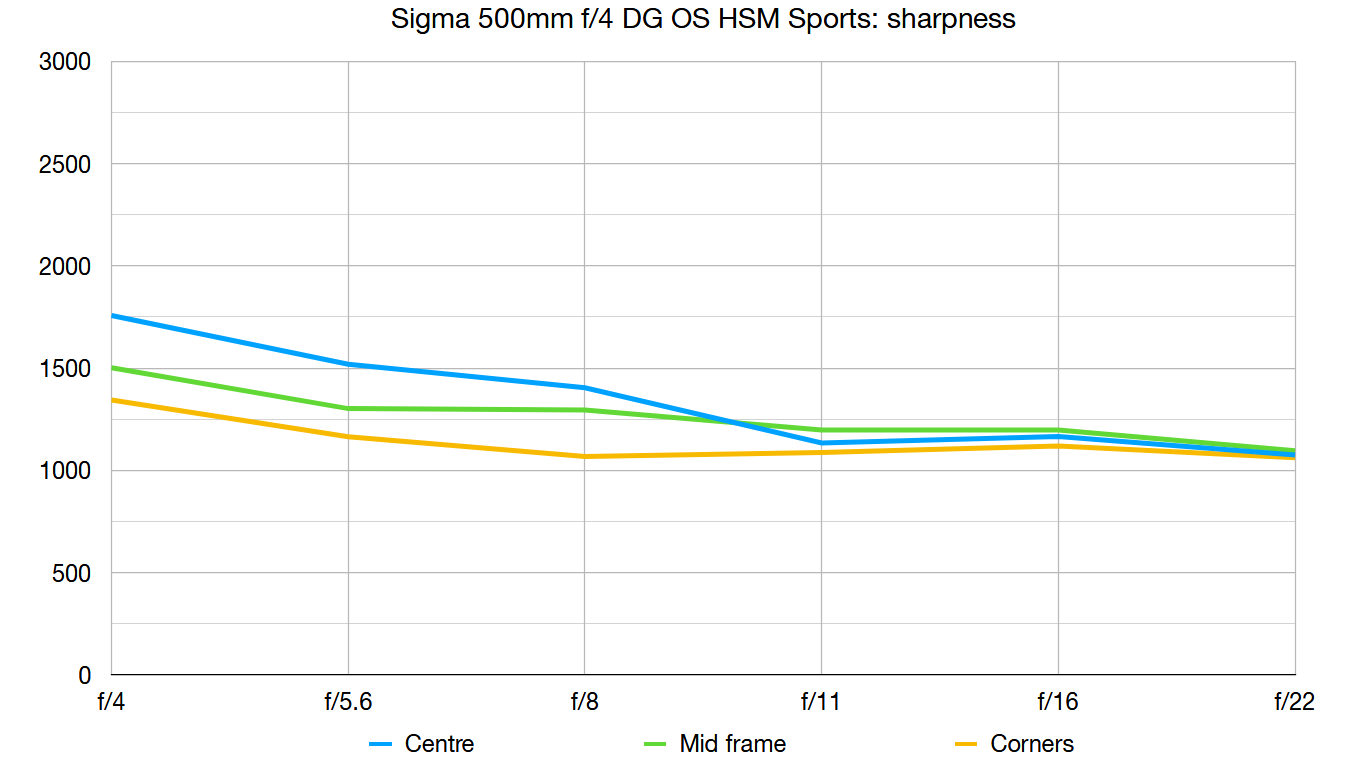Digital Camera World Verdict
Massively undercutting the likes of Canon and Nikon own-brand 500mm f/4 super-telephoto primes for price, Sigma’s 500mm F4 lens nevertheless justifies its ranking as the company’s flagship Sports lens. It packs a smorgasbord of features into a tough, weather-sealed magnesium alloy barrel, has exotic, high-end handling and really delivers the goods in terms of image quality and all-round performance.
Pros
- +
High-end handling exotica
- +
Super-fast autofocus
- +
Superb build-quality
Cons
- -
As a 500mm f/4 prime, it’s typically big and heavy
- -
No native mount options for mirrorless cameras
Why you can trust Digital Camera World
There’s a natural attraction to 150-600mm telephoto zooms for sports and wildlife photography, not only for their powerful range of focal lengths but also for their affordability. Indeed Sigma offers two highly capable options: the 150-600mm f/5-6.3 DG OS HSM Contemporary (£849/$899) and 150-600mm f/5-6.3 DG OS HSM Sports (£1,329/$1,849). The only real downside is that the aperture shrinks to a relatively narrow f/6.3 towards at longer focal lengths.
For freezing the action under dull lighting, as well as for getting a tighter depth of field, the 500mm f/4 prime lens is 1.33 f/stops faster, which can make a big difference. The lens is undeniably big and weighty but there’s no getting around that if you want a super-tele lens that’s this fast. It’s expensive too but, then again, the Sigma doesn’t cost much more than half the price of the directly competing Canon EF 500mm f/4L IS II USM and Nikon AF-S 500mm f/4E FL ED VR primes, making it a real money-saver.
Specifications
Mount: Canon EF, Nikon F, Sigma
Full frame: Yes
Image stabilization: Yes
Autofocus: Yes
Lens construction: 16 elements in 11 groups
Angle of view: 5 degrees
Diaphragm blades: 9
Minimum aperture: f/32
Minimum focusing distance: 3.5m
Maximum magnification ratio: 0.15x
Filter size: 46mm (rear)
Dimensions: 145x380mm
Weight: 3,310g
Key features
This lens is built for speed. As such, its key features are a fast f/4 aperture rating, a super-speedy ring-type ultrasonic autofocus system, and a wealth of handling trickery tailored to nailing sports, action and wildlife shots. We’ll come to the handling extras later but another key feature of any lens is naturally its optical path. The Sigma boasts one SLD (Special Low Distortion) and two top-grade FLD (Fluorite Low Distortion) elements in its line-up of 16 elements, arranged in 11 groups. Nine diaphragm blades ensure that the aperture remains well-rounded when stopping down.
Prolonged handheld shooting with a lens that weighs 3,310g can be a physical challenge but the lens nevertheless features a 4-stop optical image stabilizer, which has switchable static and panning modes. Not just for handheld shooting, the stabilizer also works well when using a monopod. The tripod/monopod mounting ring is of particularly good quality and comes complete with 90-degree click-stops for quick and easy changes in orientation. There’s a de-click switch as well, to enable high-precision adjustments.
The autofocus system has two switchable AF modes. These give priority to either autofocus or to manual override. In the ‘MO’ setting, you can apply manual override without first waiting for autofocus to lock onto an object, and apply manual adjustments when the camera is in continuous autofocus mode.
If 500mm doesn’t cover the distance, the lens is compatible with Sigma’s latest 1.4x and 2x tele-converters. It’s also compatible with Sigma’s optional USB Dock, which you can use for setting up Custom modes, fine-tuning autofocus and applying firmware upgrades. The lens lacks the third stabilization mode featured in some recent telephoto lenses, which only applies stabilization during actual exposures, thus making it easier to track erratically moving objects in the viewfinder. However, you can adjust how visible the effect of stabilization is in the viewfinder in either or both of the switchable Custom modes, as well as altering the speed of autofocus.
The best camera deals, reviews, product advice, and unmissable photography news, direct to your inbox!
Build and handling
Build quality is everything you’d expect from a pro-grade super-telephoto lens. The barrel is made from tough yet weight-saving magnesium alloy and features a comprehensive set of weather-seals around all the joints and switches. A fluorine coating is also applied to the front element, to repel grease and moisture. Even the hood is constructed from high-grade carbon fibre, instead of the usual plastic. At the back, there’s Sigma’s usual plated brass mounting plate, in front of which there’s a 46mm drop-in filter slot. The forward end of the lens has a diameter of 145mm so, unsurprisingly, there’s no front filter thread.
Handling exotica includes a rank of customisable AF-on/AF-lock buttons, which fall naturally under the thumb, positioned just forward of the manual focus ring. Behind the focus ring are the main control switches, which include AF/MO/MF focus modes, an autofocus range limiter that can lock out either the short or long sections of focusing distance, OS mode 1/2/off, and two switchable Custom modes. At the back of the lens is a switch for selecting AF-on and AF-lock functions, as well as a Focus Recall mode. This works in conjunction with an adjacent Set button, enabling you to preset focus distance, complete with a Beep on/off option.
Performance
We got an excellent hit rate from the autofocus system, even for fast-moving objects, ensuring that shots were consistently sharp. Consistent sharpness is also aided by the optical stabilizer, which lives up to its 4-stop billing in handheld shooting. Levels of sharpness themselves are excellent in the central region of the frame, even when shooting wide-open at f/4, and remain very good indeed towards the edges and corners.
Helped by the inclusion of SLD and FLD elements, colour fringing is entirely negligible, while Sigma’s Super Multi-Layer Coating does a good job of minimizing ghosting and flare. It’s not technically a zero-distortion lens but the tiny amount of pincushion is generally unnoticeable.
Sample photos
Lab data
We run a range of lab tests under controlled conditions, using the Imatest Master testing suite. Photos of test charts are taken across the range of apertures and zooms (where available), then analyzed for sharpness, distortion and chromatic aberrations.
We use Imatest SFR (spatial frequency response) charts and analysis software to plot lens resolution at the centre of the image frame, corners and mid-point distances, across the range of aperture settings and, with zoom lenses, at four different focal lengths. The tests also measure distortion and color fringing (chromatic aberration).
Sharpness:
Levels of sharpness across most of the frame are excellent, especially when shooting wide-open at f/4, and they don’t drop off much towards the extreme edges and corners.
Fringing:
Even in the extreme corners of the image frame, lateral chromatic aberration is absolutely negligible, so you won’t see any unwanted color fringes around high-contrast edges of objects.
Distortion: -0.15
As with color fringing, distortion is extremely minimal, with just the merest hint of pincushion.
Verdict
Sigma has packed pretty much every feature imaginable into its flagship Sports lens. Along with great glass, it has a wealth of features and handling finery that make the lens an absolute joy to use, despite its weighty construction. Build quality is of a fully professional-grade standard, while image quality and all-round performance are scintillating. All in all, it’s a stunning lens and, despite being expensive to buy, is an absolute bargain at the price, especially when compared with its Canon and Nikon own-brand counterparts.
Read more:
The best Canon telephoto lenses
The best Nikon telephoto lenses
The best lenses for bird photography and wildlife
The best 150-600mm lenses
The best tripods
The best monopods
Matthew Richards is a photographer and journalist who has spent years using and reviewing all manner of photo gear. He is Digital Camera World's principal lens reviewer – and has tested more primes and zooms than most people have had hot dinners!
His expertise with equipment doesn’t end there, though. He is also an encyclopedia when it comes to all manner of cameras, camera holsters and bags, flashguns, tripods and heads, printers, papers and inks, and just about anything imaging-related.
In an earlier life he was a broadcast engineer at the BBC, as well as a former editor of PC Guide.













